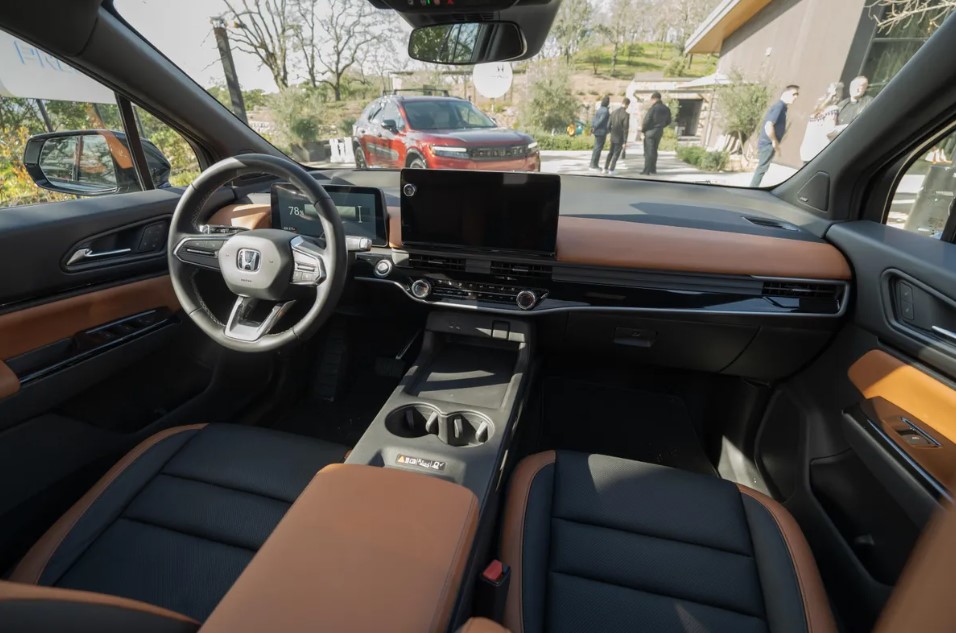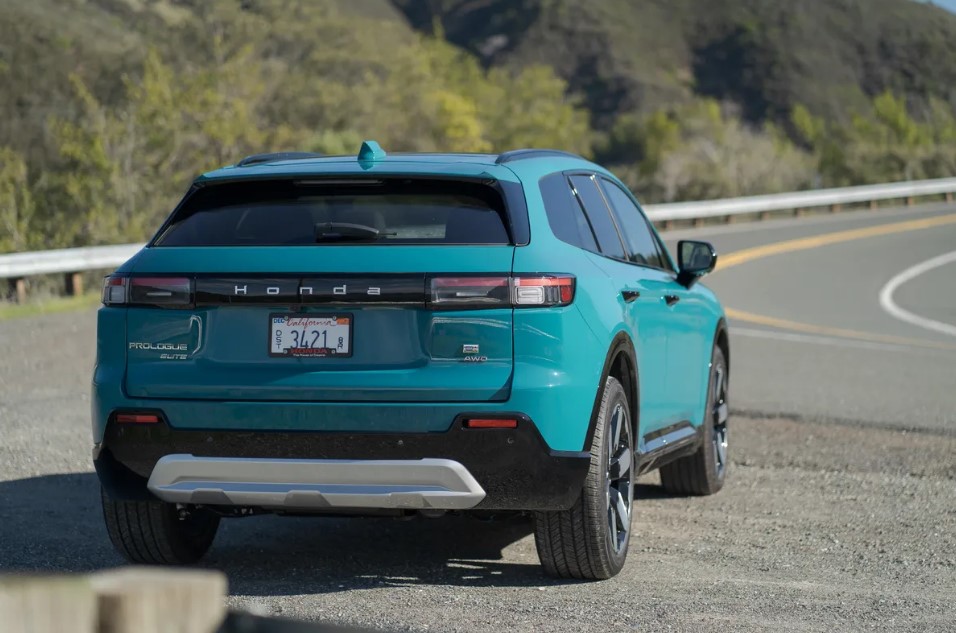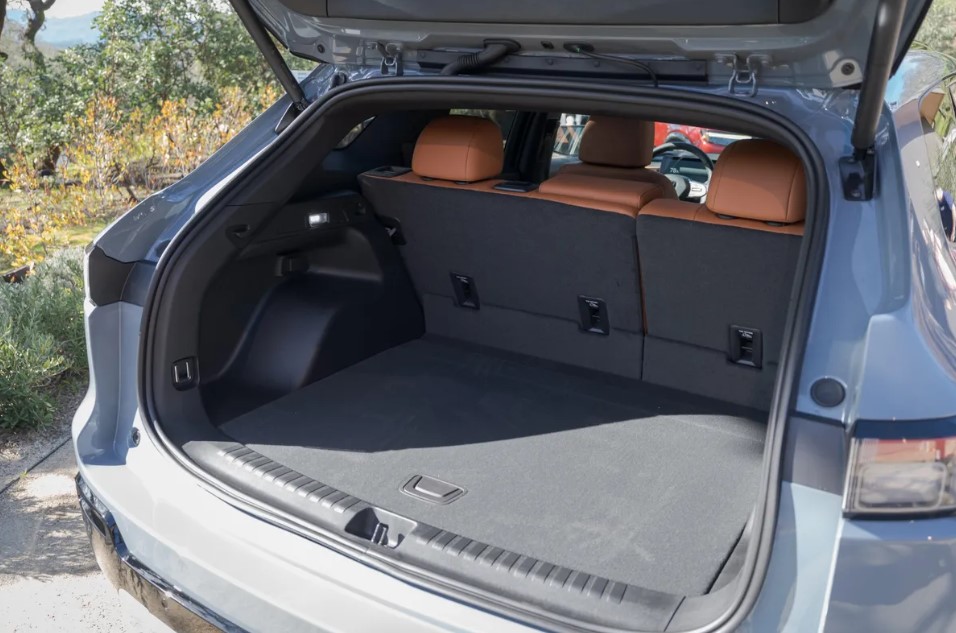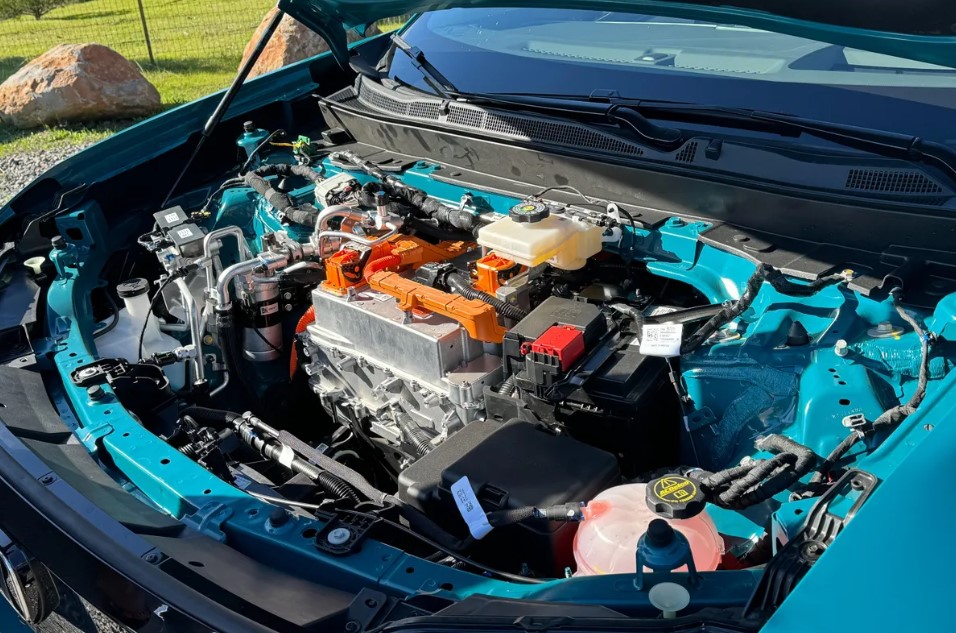2026 Honda Prologue EV Specs, Redesign, Dimensions – GM’s Ultium EV platform is reinvented by Honda’s first long-range electric SUV with its innovative design, useful features, and affordable price.
If you’ve been waiting for a Honda long-range EV before making the transition yourself, the wait is, in a way, over. The 2026 Prologue has a Chevy heart while being Honda’s first all-electric SUV. I mean that literally: The battery and electric powertrain technologies are built on top of GM’s Ultium EV platform.
However, after a day of driving, I found that the Prologue is a fantastic option in this very competitive market since it varies from the mechanically similar Chevrolet Blazer EV sufficiently in terms of performance, software, packaging, and style. 2026 Honda Prologue EV Specs
2026 Honda Prologue EV Redesign and Update Plan
Exterior & Interior
The interior of the Prologue has four 45-watt USB type-C high-speed ports for charging laptops, tablets, and phones, comfortable seats, what are perhaps the biggest cup holders I’ve ever seen, and an excellent center console and dashboard.
Among the standard features are an Android-powered dashboard with an 11-inch digital instrument cluster, an 11.3-inch main touchscreen, and the Google Built-In operating system. To put it another way, Google Maps is used for navigation, and its route planning takes into account real-time range calculations, charging stations, and energy efficiency.
Drivers may utilize Google Assistant as a voice command system by saying things like “Hey, Google, set the temperature to 69 degrees” or “Listen to the Hives on Spotify.” Passengers can use the Google Play Store to search for and install music and audio streaming apps.
The fact that GM’s OnStar provides the Honda’s 5G data connection is one of several indications that the Prologue’s internal technology is built on the same framework as the Blazer EV. There are enough software differences to convince customers to pick the Honda. The fact that GM’s EVs offer wireless and USB-C connected Apple CarPlay and Android Auto is a huge bonus for drivers who prefer Apple’s ecosystem or who don’t want to log in to a loaned or shared vehicle.
The Prologue feels more than just a replica of the Chevrolet Blazer EV; it’s agile and smooth. Even if the overall ideas and underlying technology of the 2026 Honda Prologue are similar, it is clear that Honda’s engineers and designers have touched, modified, and affected every aspect of the vehicle. The difference is barely perceptible when compared side by side.
The addition of well-liked amenities like Apple CarPlay and Android Auto, together with its lower price (for the time being), give the Honda a little edge over the Blazer. It is therefore a suitable option for long-distance electric SUVs.
However, Prologue early adopters are already a little worried about the software growing pains that the Blazer has had in its first few months of operation, thus sharing GM’s Ultium platform may end up being a double-edged sword. Honda engineers claim that the Prologue’s software is exclusive to Honda and free of the issues that led to the most recent Blazer EV stop-sale.
When the Prologue begins to arrive at dealerships in the coming weeks, we should expect a smooth debut. I should point out that the head-up display entirely failed during my test drive, even though, to be fair, my Prologue Elite was a preproduction vehicle and mistakes do happen. I had no additional issues during my little test drive, but I want to do a longer test soon. 2026 Honda Prologue EV Specs
2026 Honda Prologue EV Specs
Engine & Performance
Customers can choose between two EV power train options based on GM’s Ultium technology. The single motor setup provides 212 horsepower and 236 pound-feet of torque to the front wheels. The system’s overall power is increased to 288 horsepower and 333 lb-ft of torque by adding a second motor to the back axle with all-wheel drive.
The Prologue is mostly a front-driven vehicle due to Honda’s on-demand AWD technology; the smaller rear motor only engages when stability, passing power, or launch traction are required. As a result, the upgrade’s range penalty is lessened.
All Prologues are powered by the same 85 kWh battery pack, which allows the single-motor EX and Touring trim levels to go up to 296 miles between charges or 281 miles with dual-motor AWD. The top-spec Elite model, which is only available with AWD, reduces to 273 miles thanks to its greater load-out of standard equipment and unique 21-inch wheels, which are the widest rollers ever installed to a production Honda.
Unlike most other electric SUVs in this class, which have their main motor at the rear axle, there are certain advantages to having it up front. The front-biased driving would be more comfortable for customers from combustion automobiles, which are commonly constructed on FWD chassis in this class. Since most vehicles use their front wheels for stopping, FWD EVs have a little advantage when it comes to regenerative braking, which extends their range and efficiency in stop-and-go, urban, and suburban settings.
Drivers may alter the Prologue’s regeneration amount by using paddle shifters. I was delighted by the Honda’s one-pedal driving and max-regen mode, which enables the SUV to stop without applying friction brakes. But the fact that the touchscreen was used to control it rather than the paddles annoyed me a little. I myself enjoy switching between one-pedal mode in town and less regen on the interstate because it’s one of the ways I maximize my EV’s range, so this is less of an issue for drivers who just use one mode.
During a day of driving across steep terrain, I averaged 3.5 miles per kilowatt-hour in the Prologue Elite, which is similar to what I get from our long-term Kia EV6 Wind AWD. The dual-motor electric power train’s acceleration off the line, as well as at passing and merging speeds, thrilled me.
At higher speeds, wind noise can be heard, but at moderate listening levels, the audio system most likely muffles it and highlights the lack of road and engine noise. Clean handling is achieved via the suspension and increased wheelbase, which successfully strike a balance between a zippy ride on surface roads and the optimal level of bump absorption on interstates.
My only complaint is that the Prologue’s steering seems a bit overboosted, even in Sport mode, which slightly weights it up. When negotiating tight turns, this makes it difficult to feel what the front wheels are doing. I doubt that drivers of midsize SUVs, who are the target market, would even notice—in fact, they could even enjoy the extra-light steering feel. 2026 Honda Prologue EV Specs
2026 Honda Prologue EV Fuel Economy
The Prologue can receive up to 155 kW of DC fast charging at a powerful enough station, which is enough to complete Honda’s recommended 20% to 80% charge in around 35 minutes. Popping the fuel door will reveal a CCS-type charging plug, even though the SUV will eventually support the NACS standard and chargers via an adapter. Since most EVs made in the next years will have that feature, it shouldn’t be a deal-breaker.
The most practical and cost-effective way to live with an EV is to set up home charging, which Honda prioritizes more than other automakers. With a Prologue purchase, buyers may choose from three different charging methods. An 11.5-kW Honda Home Charging Station, a $500 installation credit via the Honda Home Electrification program, and a $100 EVgo public charging credit are included with the first choice.
Option two reduces to a smaller 7.6-kW portable charger and a $300 installation incentive, but it scales up to a $300 EVgo credit. The third choice is a straightforward $750 EVgo credit, designed for owners of existing home charging equipment and apartment dwellers who are unable to install.
All three charging choices also come with a 60-kWh Electrify America charge cap, which is a modest but free introduction to EA’s network. Honda is one of seven OEMs collaborating on the IONNA DC fast charging network, which is scheduled to begin later this year with the goal of building 30,000 charge points at 1,350 charging stations across the US and Canada by 2030. However, Honda has not revealed any incentives or benefits for Prologue buyers.
2026 Honda Prologue EV Release Date & Price
While the top-of-the-line Elite AWD model of the 2026 Honda Prologue costs $59,295 (including the $1,395 destination fee), the base single-motor EX variation costs $48,795. In this class, which also includes Ford’s Mach-E, Volkswagen’s ID.4, and Kia’s EV6, the Prologue is reasonably priced considering that it is one of the bigger vehicles and has the longest wheelbase (121.8 inches).
With a starting price of $61,790, even its technological cousin, the Chevrolet Blazer LT, is more costly than the Honda. When Chevy introduces the front-drive option for the Blazer later this year, this might change.
If Honda and GM adjust their supply chain to meet the program’s requirements, the Prologue, which is now ineligible for the $7,500 federal EV tax credit, would qualify. However, in your area, the electric SUV may still be eligible for state or local incentives.
Note: The details included in this blog post are derived from pre-release material that was accessible when the article was written. If you want the latest information, you should check official sources or call your nearest dealership.
Read Also:
- 2026 Honda Prelude Review, Specs, Redesign
- 2026 Honda Ridgeline Redesign, Specs, Price
- 2026 Honda Passport Redesign, Specs, Price
- 2026 Honda Accord Redesign, Specs, Review
- 2026 Honda Odyssey Review, Price, Specs




